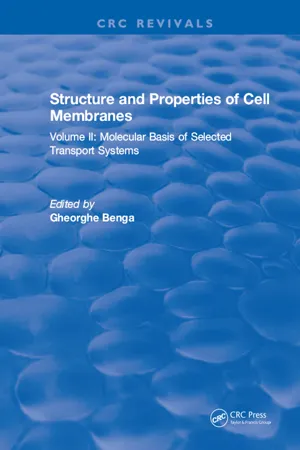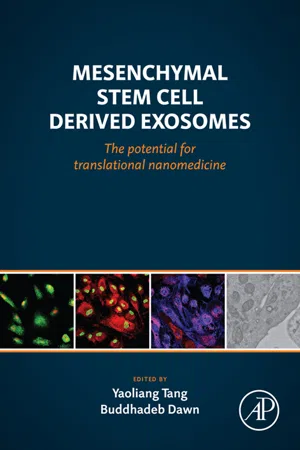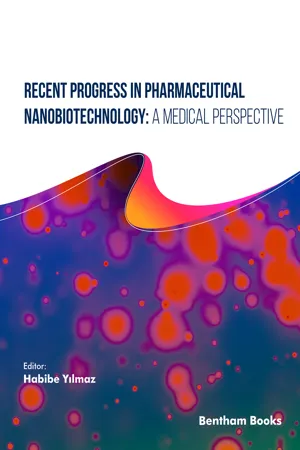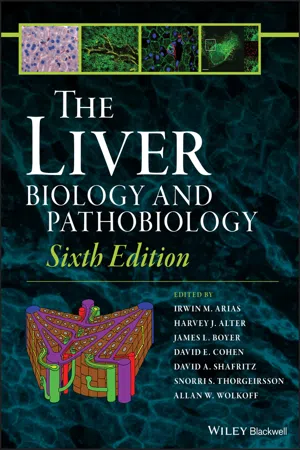Biological Sciences
Exocytosis and Endocytosis
Exocytosis is the process by which cells release molecules or waste materials by fusing vesicles with the cell membrane, allowing the contents to be expelled into the extracellular space. Endocytosis, on the other hand, involves the uptake of materials into the cell by the formation of vesicles from the cell membrane. Both processes are essential for maintaining cellular function and homeostasis.
Written by Perlego with AI-assistance
Related key terms
Related key terms
1 of 4
Related key terms
1 of 3
6 Key excerpts on "Exocytosis and Endocytosis"
- Ian Peate, Muralitharan Nair, Ian Peate, Muralitharan Nair(Authors)
- 2011(Publication Date)
- Wiley-Blackwell(Publisher)
Endocytosis is the process by which cells take in molecules such as proteins from outside the cell by engulfing them with their cell membrane. It is used by all cells of the body because most substances important to them are polar and consist of big molecules, and thus cannot pass through the hydrophobic plasma membrane. During endocytosis only a small section of the cell membrane plays a part to form a fold and a new intracellular pod is formed containing the substance. There are three types endocytosis:- Pinocytosis (‘cell drinking’). In pinocytosis the molecule engulfed is relatively small (see Figure 2.8 )
- Phagocytosis (‘cell eating’) (see Figure 2.8 )
Figure 2.8Pinocytosis, phagocytosis and receptor-mediated endocytosis- Receptor-mediated endocytosis (see Figure 2.8 )
- involves specific receptors that bind to large molecules in the extracellular fluid
- the substance bound to the receptor is called a ligand.
ExocytosisExocytosis is a process for moving items from the cytoplasm of the cell to the outside. The intracellular vesicle with its ingested substances fuses with the cell membrane to get rid of the unwanted substance from the cell (see Figure 2.9 ). This process is also utilised by nerve cells to release chemical messengers into the synapse of a neurone. Gland cells release proteins by exocytosis.Many cells in the body use exocytosis to release enzymes or other proteins that act in other areas of the body, or to release molecules that help cells communicate with one another. For instance, clusters of α- and β-cells in the islets ofLangerhans in the pancreas secretethe hormonesglucagon and insulin, respectively. These enzymes regulate glucose levels throughout the body. As the level of glucose rises in the blood, the β-cells are stimulated to produce and secrete more insulin by exocytosis. When insulin binds to liver or muscle, it stimulates uptake of glucose by those cells. Exocytosis from other cells in the pancreas also releases digestive enzymes into the gut.- eBook - ePub
- Gheorghe Benga(Author)
- 2018(Publication Date)
- CRC Press(Publisher)
FIGURE 1. Diagrammatic representation of Exocytosis and Endocytosis.Uptake of large particles by phagocytosis, including receptor mediated via coated vesicles, and uptake of fluids and solutes by pinocytosis are depicted as pathways separate and distinct but interacting with the biosynthetic and secretory pathways of exocytosis to the cell’s exterior.The passage of secretory materials through the Golgi apparatus has been amply demonstrated by electron microscope autoradiography using tritiated precursors as labels.1 , 19 , 20 , 21 , 22 , 23 , 24 As examples, for the guinea pig pancreas21 and the rabbit parotid gland23 following a 3- to 5min pulse label with [3 H] amino acid, the half-time for exit of labeled secretory proteins from the rough endoplasmic reticulum is 7 to 22 min and the half-time of entry into mature granules is greater than 60 min (Figure 4 ).However, Golgi apparatus activities associated with packaging and secretion may extend beyond those of segregation, processing, and sorting. Certain marine algae carry out a complex process of stepwise assembly and secretion of complex wall units known as scales entirely within the cisternae of the Golgi apparatus.25 , 26 In Pleurochrysis scherffeli, the completed cellulosic scales are discharged at a rate of one about every 2 min, each scale surrounded completely by the membrane of a single Golgi apparatus cisterna. The process has been viewed and recorded in living cells,27 on the one hand, to provide an opportunity to monitor precisely the kinetics of cisternal formation and discharge by Golgi apparatus.28 Additionally, from a knowledge of the complex architecture of the scales,26 - eBook - ePub
- Alasdair Steven, Wolfgang Baumeister, Louise N. Johnson, Richard N. Perham(Authors)
- 2016(Publication Date)
- Garland Science(Publisher)
Arrows indicate main directions of outbound and inbound traffic. Some organelles like mitochondria or chloroplasts are not involved in vesicular membrane traffic. (Adapted from B. Alberts et al. Mol. Biol. Cell, 6th Edition, 2015) Vesicle transport between topologically equivalent compartments does not require the crossing of membranes but does require their fission and fusion. However, cells do need to import or export molecules from the interior of the cell to the exterior, or between discrete organelles such as mitochondria, which all involve the crossing of membranes. The details of transmembrane transport are covered in Chapter 16. Large amounts of materials are exchanged between the cytosol and the nucleus. The nuclear membrane is punctuated by pore complexes, which are gated to control what enters and leaves the nucleus. The structure of these pores is described in Section 10.5 and the mechanism of nuclear import and export in Section 10.6. Bacteria are not physically compartmentalized like eukaryotic cells but still need mechanisms to import and export materials across their bounding membranes. Pathogenic bacteria also have machines that allow them to insert materials into host cells. These will be described in Section 10.7. 10.2 Clathrin-Mediated Endocytosis The uptake of material into a cell by invagination of the plasma membrane and its internalization in a membrane-enclosed vesicle is referred to as endocytosis. When the selection of cargo is mediated by membrane-spanning receptors, we speak of receptor-mediated endocytosis. In the secretory pathway, molecules destined to be moved out of the cell become enclosed in vesicles that fuse with the plasma membrane to release their cargo to the exterior - eBook - ePub
Mesenchymal Stem Cell Derived Exosomes
The Potential for Translational Nanomedicine
- Yaoliang Tang, Buddhadeb Dawn(Authors)
- 2015(Publication Date)
- Academic Press(Publisher)
Chapter 1Insights into the Mechanism of Exosome Formation and Secretion
Kobina EssandohGuo-Chang Fan Department of Pharmacology and Cell Biophysics, University of Cincinnati College of Medicine, Cincinnati, OH, USAAbstract
Exosomes are small membrane vesicles that range between 30 and 100 nm in size, released from most types of cells. Originally discovered in recticulocytes, exosomes have largely been known to be products of the endocytic–endosomal pathway. Exosome biogenesis therefore starts at endocytosis, progresses through early and late endosomes to multivesicular bodies (MVBs), and finally forms when MVBs fuse with the plasma membrane to release the intraluminal vesicles (ILVs). The endosomal sorting complex required for transport (ESCRT) plays a major role in sorting cellular proteins into exosomes at the early and late endosomal stages. However, some exosomal proteins can also be loaded in an ESCRT-independent manner, through molecules such as ceramide. Furthermore, recent studies have shown that various factors and pathologic/stress conditions can promote the release of exosomes from various cells. In this review, we will summarize the current knowledge on the signaling/regulation of exosome biogenesis/release, with emphasis on the endocytic-dependent and - independent pathways. We will also discuss how stress and pathologic conditions stimulate exosome biogenesis/release. - Habibe Yilmaz(Author)
- 2001(Publication Date)
- Bentham Science Publishers(Publisher)
13 ].Exosome biogenesis begins in the endosomal system. Cell membrane proteins and extracellular biomolecules form primary endocytic vesicles after endocytosis. The primary endocytic vesicles then merge with each other to create early endosomes (EE). EEs develop into late endosomes (LE). Multivesicular bodies (MVB) are created by LEs. Many membrane invaginations take place in LEs during the formation of MVBs from LEs. Cargo molecules are packaged into intraluminal vesicles (ILV) during this membrane invasion. As a result, MVBs filled with numerous ILVs are produced. MVBs have different intracellular orientations depending on their surface molecules. While some MVBs are transported to the cell membrane by intracellular motor proteins as delivery carriers, others are directed to lysosomes that are responsible for intracellular digestion to remove their contents. ILVs are released from the cell by MVBs and transported to the cell membrane after they fuse with the cell membrane. The ILVs, which remain inside the MVBs, are named exosomes after they are secreted out of the cells [14 ].The secretion of exosomes process mentioned in detail above can be considered in summary as four stages: biogenesis, transport of MVBs to the cell membrane, fusion of MVBs with the membrane, and secrete of ILVs out of the cell.Although some of the molecules involved in these stages have been identified, it is currently not possible to distinguish all of them experimentally due to problems with scientific methodology. Studies have not yet made it crystal clear which phase the under investigation molecule operates in [3 ]. The molecules mentioned in the following section, which are known to be crucial in the process leading to exosome secretion, may be involved in one or more stages of the process. The molecules involved in these stages cause the development of various MVB and ILV structures, and as a result, the secretion of exosomes with various contents and functions (Fig.2- eBook - ePub
The Liver
Biology and Pathobiology
- Irwin M. Arias, Harvey J. Alter, James L. Boyer, David E. Cohen, David A. Shafritz, Snorri S. Thorgeirsson, Allan W. Wolkoff(Authors)
- 2020(Publication Date)
- Wiley-Blackwell(Publisher)
6 Endocytosis in Liver Function and Pathology Micah B. Schott, Barbara Schroeder, and Mark A. McNivenDepartment of Biochemistry and Molecular Biology, Division of Gastroenterology and Hepatology, Mayo Clinic, Rochester, MN, USAINTRODUCTION
A prominent function of the hepatocyte is the regulated uptake of extracellular material for subsequent processing and/or transport into bile. This process, known as endocytosis, depends on elaborate vesicle trafficking machinery that is linked to specific lipid–membrane subdomains and the cytoskeletal matrix. This provides a mechanism to sequester and internalize transmembrane receptor/ligand complexes, such as epidermal growth factor, hepatocyte growth factor, and iron‐bound transferrin, and to help maintain normal lipid serum levels through the endocytosis of low‐density lipoproteins (LDLs). Of equal importance is the fact that this highly evolved machinery can be “hijacked” by many pathogens including bacteria, viruses, and parasites to infect the liver, leading to inflammation and hepatitis. This review will outline the molecular and cell biological mechanisms that underlie endocytosis in the liver, including the diverse roles of endocytic vesicles in the cytoplasm and how these pathways are altered in liver disease.ENDOCYTIC VESICLE FORMATION AT THE PLASMA MEMBRANE
Endocytic vesicles are formed at the plasma membrane as inward budding events that invaginate toward the cytoplasm. These membrane structures form vesicles that are packed with various types of “cargo” such as integral membrane proteins, receptor–ligand complexes, lipids, fluid, and nutrients. The cargo content of endocytic vesicles differs considerably between the various modes of uptake. For example, nonselective endocytic pathways, such as macropinocytosis, mediate the import of nutrient‐rich extracellular fluid, whereas selective pathways, such as receptor‐mediated endocytosis, import specific soluble ligands and transmembrane receptors. Regardless of the mechanism of internalization, endocytic vesicles deliver cargo to the early endosome (EE) for sorting to different destinations, including recycling back to the cell surface, secretion to the extracellular milieu, or degradation by late endosomes and lysosomes.
Index pages curate the most relevant extracts from our library of academic textbooks. They’ve been created using an in-house natural language model (NLM), each adding context and meaning to key research topics.
Explore more topic indexes
Explore more topic indexes
1 of 6
Explore more topic indexes
1 of 4





